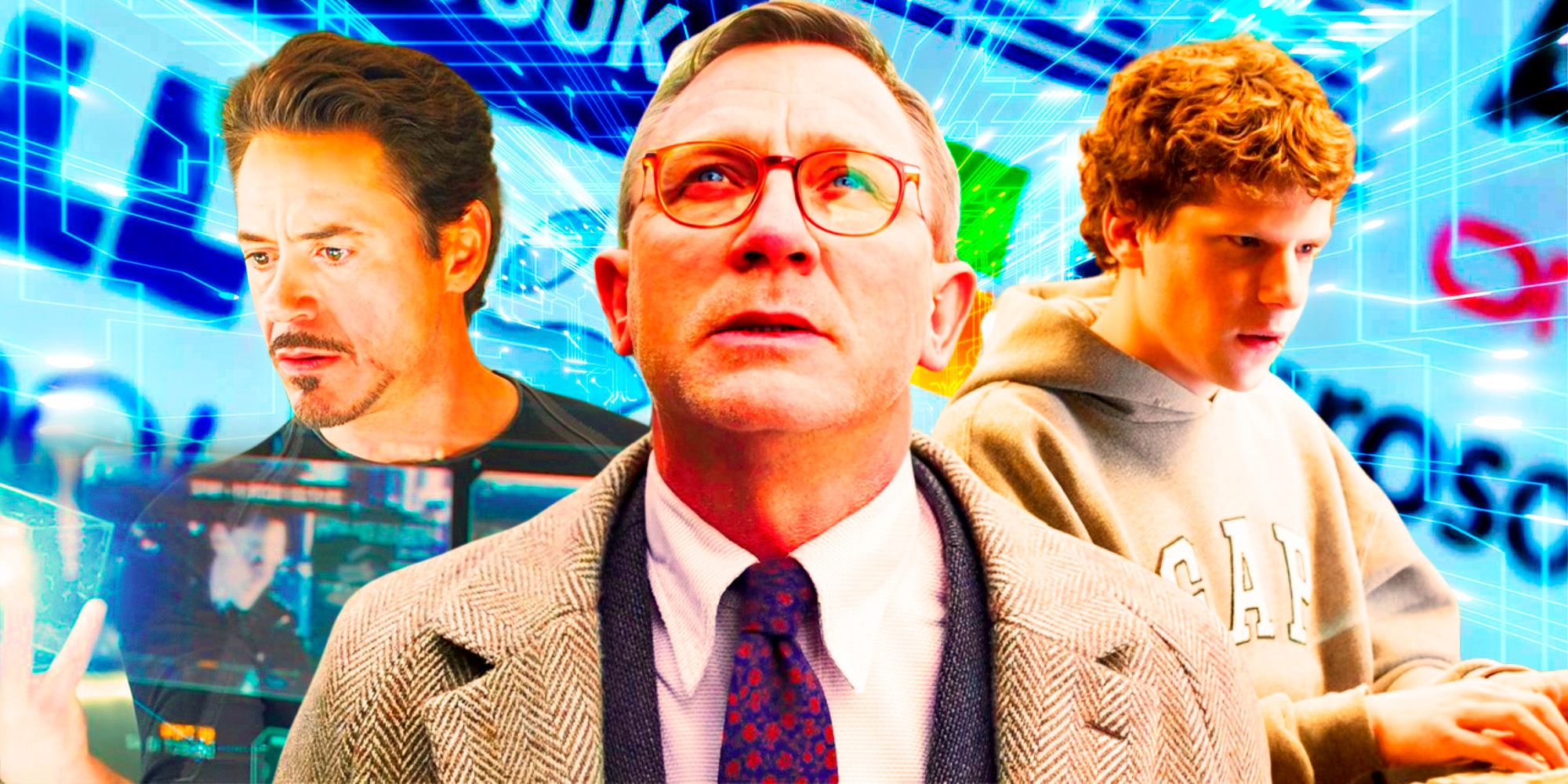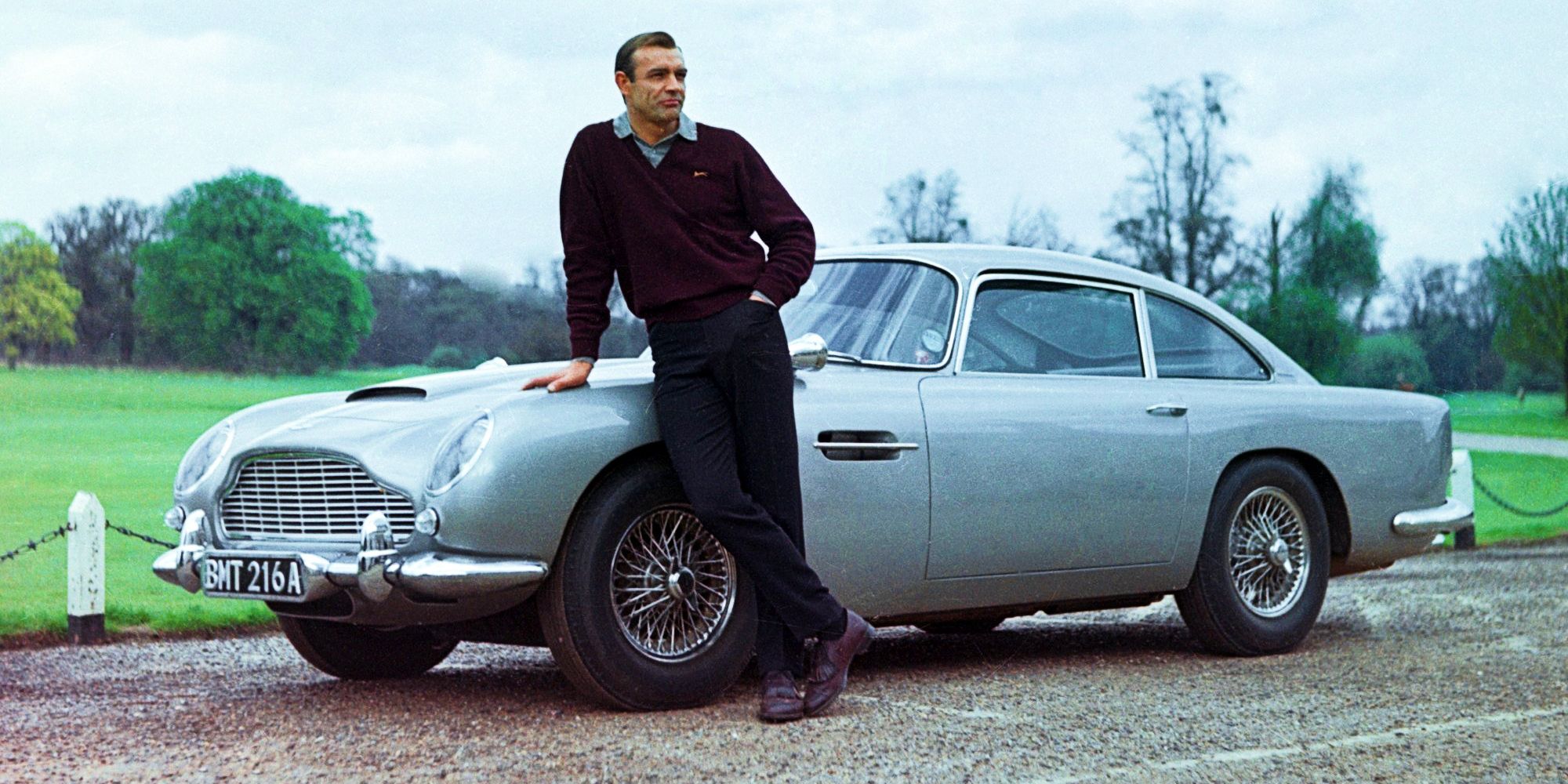
Eagle-eyed viewers will quickly notice how innovative technology is presented in a film, as these depictions often have fascinating behind-the-scenes circumstances to explain them. While in today's modernity technology world, characters using phones, computers, and different types of technology are a given, there are usually large corporations behind the scenes making important decisions about how their technology is being used. This can lead to a positive viewer perception of the featured technology and provide a level of product placement that subconsciously influences consumer habits.
While the technology has been central to some of the best science fiction films of all time, it is also prevalent in murder mysteries, biopics, and rollicking comedies. While the public isn't always privy to these behind-the-scenes deals, information has slowly leaked out about the true nature of the strict rules that technology companies force filmmakers to follow. Even if viewers don't realize that the bad guys never use Apple products, Small details like this can have a huge effect on how and what the public buys and choose to consume.
10
Apple will not allow crooks to use iPhones
Knives Out (2019)
If viewers are watching a movie and aren't sure who the bad guys are, a quick way to find out the truth is to check which character doesn't have an iPhone. This may seem like a strange way to determine moral fortitude, but it's exactly what Apple requires films to do if they want to use its technology in the film. This was certainly the case The Rian Johnson Murder Mystery on Netflix Knives outwhich had a specific rule that villains could not be seen using iPhones on camera.
Johnson stated in a video for Vanity Fair where he broke a scene of Knives out that Apple was very specific about how its technology could be used in the film. “Apple, they let you use iPhones in movies, but, and this is very important, if you're watching a mystery movie, the bad guys can't have iPhones on camera,” he said. Johnson then joked that every other filmmaker with a movie villain wants to keep it a secret.”want to kill me now.”
9
IBM did not want HAL 9000 to be associated with computer failures
2001: A Space Odyssey (1968)
Stanley Kubrick 2001: A Space Odyssey was a masterpiece of science fiction that continued to be acclaimed and had an undeniable influence on the genre as a whole. Through beautiful use of classical music, exploration of philosophical themes, and message about the dangers of technology, this story about a sentient supercomputer gone evil called HAL 9000 has never been more relevant. However, astute viewers noticed HAL's connections to the technology company IBM, whose logo appeared briefly in the film and whose letter name was just one letter displaced from IBM.
Kubrick was aware of these connections and, in 1966, he wrote a letter to anticipate the controversy (via Note Letters) when he wrote to the vice president of Polaris Productions, Roger Caras, saying: “I don't want to get anyone in trouble" and "I don't want them to feel like they were cheated”For his story of a “psycho computer.” Kubrick heard back that IBM had no problems with 2001: A Space Odyssey as long as your equipment was not associated with “failure” and would allow the company to get an on-screen credit if it was not listed as “technical consultant for computer.”
8
The good guys use Macs
Mission: Impossible (1996 - Present)
In recent decades, computers have been intrinsically linked to everyday life, and it makes sense that they are featured as the main plot drivers in countless films. The ubiquitous nature of modern computing means that both good and bad will have to utilize the technology, which can have a negative impact on a technology company's reputation. Apple has been steadfast about its commitment to maintaining a positive image in film, which can be seen through its rule that the good guys use Macs in Mission: Impossible (through Irish times.)
While product placement has a long history in Hollywood, Suzanne Forlenza, manager of film/TV marketing and placement at Apple, explained that in Mission: Impossible series Apple has a standing agreement for Tom Cruise and the rest of the IMF to use Apple technology. “We constantly insist that we will only be in the hands of the good guys", said Forlenza. With Apple products being used repeatedly by heroes to save the world, this could lead the public to associate Apple with positivity and virtue.
7
Tony's Tesla
Iron Man (2008)
The Marvel Cinematic Universe began in 2008 with the first Iron Manand with that, the world was introduced to the perfected embodiment of Tony Stark in Robert Downey Jr. One real-life figure who was often compared to Stark was Tesla CEO Elon Musk, who even had a cameo appearance in Iron Man 2, where he was shown briefly speaking to Stark. However, this duo's connection goes back to the first film, in which Stark was seen sporting a Tesla vehicle among his other luxury cars in a scene where he tested out his supersuit in his garage.
The appearance of the Tesla Roadster sports car in Iron Man in fact, it predated the car's public availability, which meant the company had to give filmmakers early access. With that in mind, it's no surprise that Stark's Tesla was simply a background image that showed off his wealth and status. Portraying Stark as a preferred customer who got early access to its vehicles made Tesla seem more ambitious to general customers.
6
My Sony sense is tingling
The Amazing Spider-Man 2 (2014)
Andrew Garfield's time as the young webslinger Peter Parker in The Amazing Spider-Man the series took full advantage of Sony's role as distributor. This meant that Sony had no problem ensuring the film significantly featured its technology, as Sony phones, laptops, televisions, and merchandise were included in this superhero film. As a modern teenager, it was no surprise that Spider-Man's childhood bedroom was filled with Sony technology, to the point of taking product placement to the next level.
It wasn't just technology that Sony promoted in The Amazing Spider-Man 2as Parker's room even contained a poster for the classic Sony film Dogtown and the Z-Boys. Even in emotionally fraught scenes between Parker and his Aunt May, it's almost jarring to see the camera pan out to reveal a Sony television on his nightstand. While product placement can have a powerful influence on viewers' consumption, in the case of The Amazing Spider-Man 2it was very noticeable.
5
The truth about Facebook
The Social Network (2010)
David Fincher's extraordinary portrait of Facebook's early days, seen in The Social Network, didn't exactly paint its founder, Mark Zuckerberg, in a positive light. With an investigative script by Aaron Sorkin, The social network delved deeply into themes of alienation, power and aspiration by showcasing Zuckerberg's founding of the social networking site during his second year at Harvard University. Facebook didn't consult Fincher about the film, and for that reason, the filmmaker had to follow strict rules to ensure the site was portrayed accurately and didn't expose itself to litigation.
Leaked emails even revealed that Zuckerberg didn't want the film to be made (via Business Insider) and that he discovered the way the film told his college years.”painful.” The fact that Zuckerberg opposed the production of The social network it meant that the technology portrayed had to be absolutely correct, as any misrepresentation of how the site worked could be seen as damaging to the company. Even if Zuckerberg claimed path Tthe social network explored their motivations for making the site fake, the actual representation of the site itself was accurate.
4
Google goes to Hollywood
The Internship (2013)
As the world's leading Internet search engine, Google has become an integral part of many people's everyday lives, although this has not always been reflected in films. A prime example of Google becoming more involved in the film industry was the Owen Wilson and Vince Vaughn comedy The Internship. The tech company was heavily involved in this story about former salespeople taking internships at Google (via Reuters.)
Google agreed to work with film producers to ensure The Internship accurately represented the company. This meant that The Internship was careful to portray a positive work culture at the Google officewith free food and exercise classes for employees being the norm. By giving filmmakers extra access than would normally be possible to a film's production, the technology company was able to exert more control over how they were portrayed in films. The Internship.
3
Patrick Bateman watch
American Psycho (2000)
In the cult novel by Bret Easton Ellis American Psychothe yuppie serial killer Patrick Bateman was known for his 36mm Rolex Oyster Perpetual Datejust watch, reference 16013. However, this wasn't the case in the film adaptation starring Christian Bale, as the luxury watch brand wasn't comfortable with Bateman sporting its product (via Luxury Bazaar) and refused permission for him to wear his exclusive watch. Instead, Bateman was seen wearing a Seiko SNJX90, which meant the book's phrase “Don't touch the Rolex” had to be removed.
However, that's not to say the famous luxury watch brand was absent American Psycho entirely, as other characters in the film were allowed to use it. It makes sense that Rolex would have strict rules about how their product would be portrayed in the film, as while Bateman may have been a stylish and ultra-modern character, his actions, such as killing his colleague with an axe, may not have seemed that way. great for company with a Rolex watch dangling from your wrist.
2
007's car never fails
James Bond (1962 – present)
THE James Bond The franchise has evolved over time since the first film was released in 1962. As a secret agent with a license to kill, 007 has consistently utilized futuristic technology and incredible gadgets throughout the films in the long-running series. An important part of Bond's appeal was his passion for sports cars, and viewers will particularly associate this MI6 agent with his Aston Martin car, which was first seen in Sean Connery's film. gold finger and continued to be a prominent part of the franchise well into the Daniel Craig era.
The partnership between Aston Martin and Bond has been long and fruitful (via Aston Martin), but it has its caveats. Although Bond was continually seen driving the vehicle in high-speed chases and performing death-defying stunts, the car was never shown to be unreliable or failing in a way that could damage its reputation. The cars in James Bond have always been presented as aspirationalwhich is why automotive technology companies have always been interested in having their vehicles featured with as much positive exposure as Aston Martin has received over the years.
1
“Just Bing”
Robo Cop (2014)
It's a long-standing joke that when a character decides to Google something in a movie, no one bats an eye, but if they decide to use the search engine Bing, viewers immediately think of it as product placement. As a competitor to Microsoft's Google, it's no surprise that Films associated with the technology company often choose to show Bing as the world's leading search engine. This was seen hilariously in the television series Hawaii Five-0 when one character told another to just “doing this” as if this were an everyday expression like 'Google it'.
Viewers interested in movies will quickly notice that Bing is being used as an alternative to Google in many films, including the 2014 remake of Robo Cop. Like a movie set in the year 2028, Robo Cop introduced Bing as the leading search engine of the future. This partnership between Microsoft and Sony (via Bing Blogs) highlighted the symbiotic nature of the film's relationships with technology companiesas they help and assist each other when it benefits both parties.
Source: Vanity Fair, Note Letters, Irish times, Business Insider, Reuters, Luxury Bazaar, Hawaii Five-0, Bing Blogs
.JPG)








